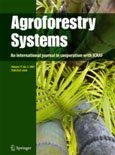Knowledge of farmers’ perceptions of and adaptations to climate change is important to inform policies addressing the risk of climate change to farmers. This case study explored those issues in the Melamchi Valley of Nepal through a survey of 365 households and focus group discussions in 6 communities using a Community-Based Risk Screening Tool–Adaptation and Livelihoods (CRiSTAL). Analysis of climate trends in the study area for 1979–2009 showed that mean annual temperatures rose by 1.02C and the frequency of drought increased measurably after 2003. Farmers reported increases in crop pests, hailstorms, landslides, floods, thunderstorms, and erratic precipitation as climate-related hazards affecting agriculture. They responded in a variety of ways including changing farming practices, selling livestock, milk, and eggs, and engaging in daily wage labor and seasonal labor migration. With more efficient support and planning, some of these measures could be adjusted to better meet current and future risks from climate change.
DOI:
https://doi.org/10.1659/MRD-JOURNAL-D-15-00032.1
Altmetric score:
Dimensions Citation Count:























